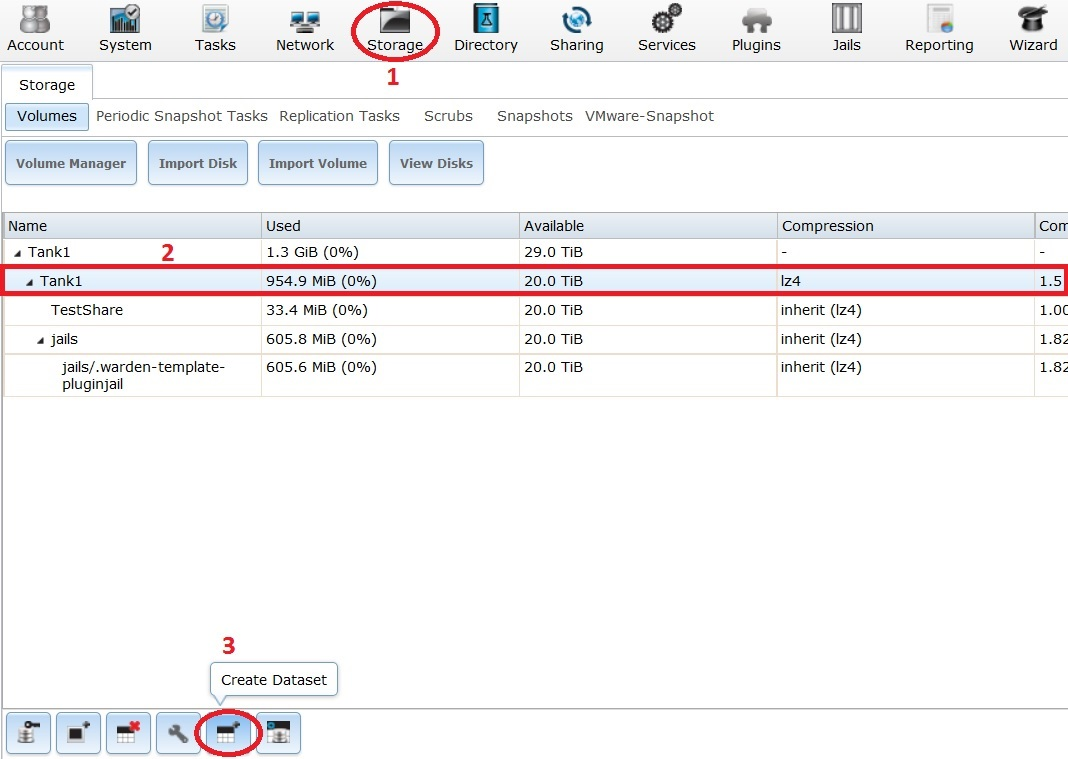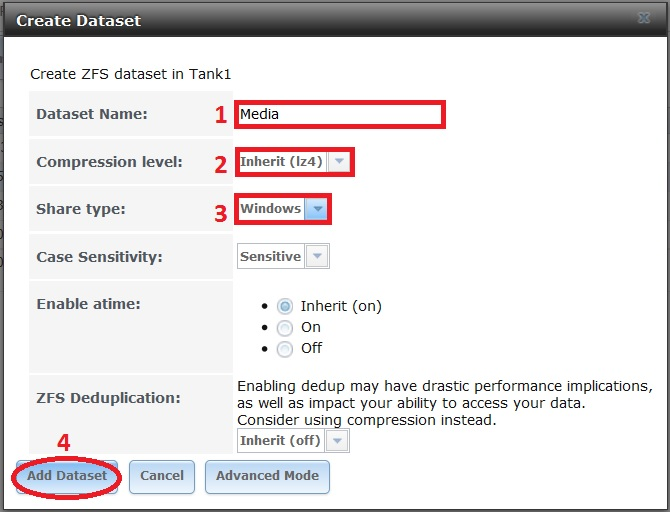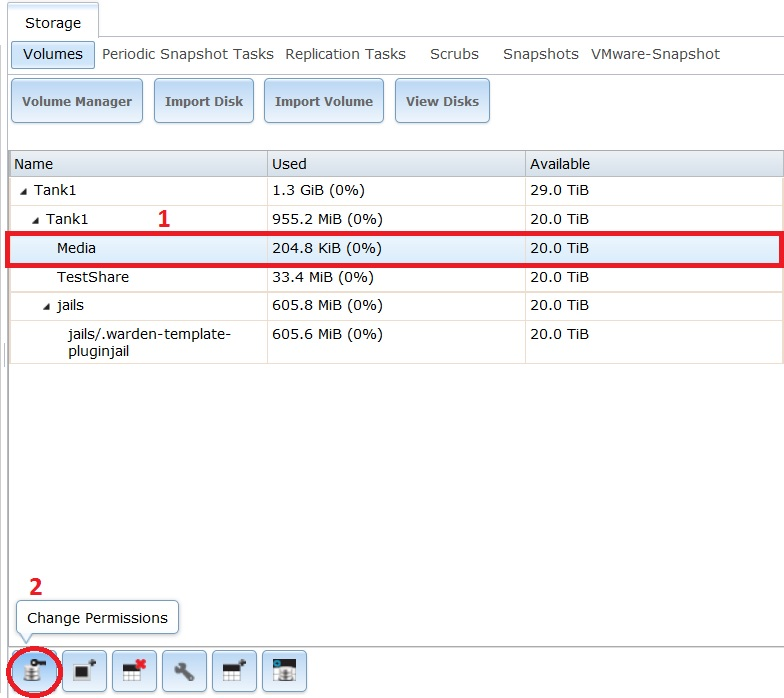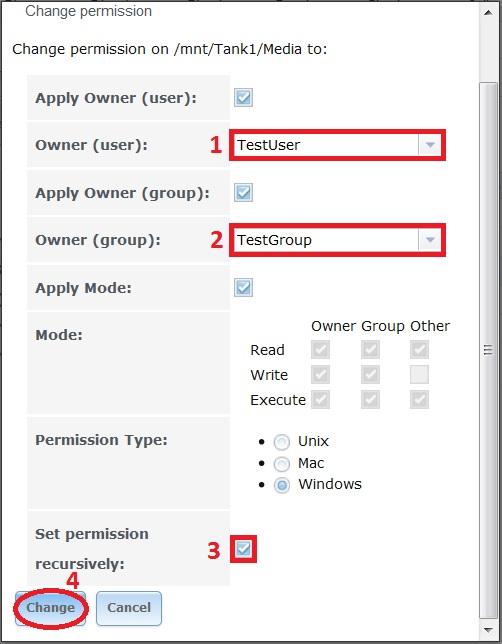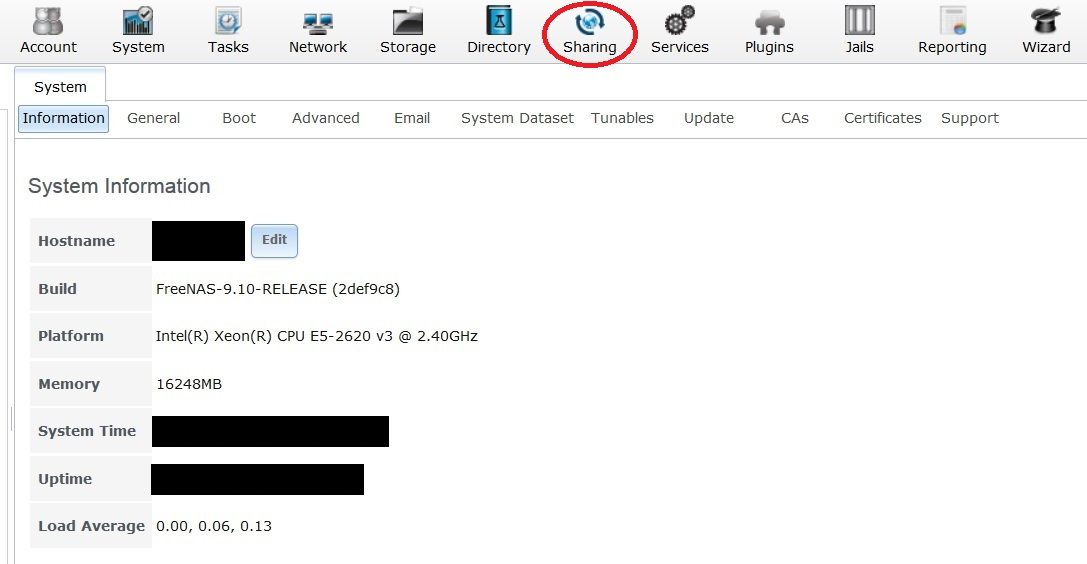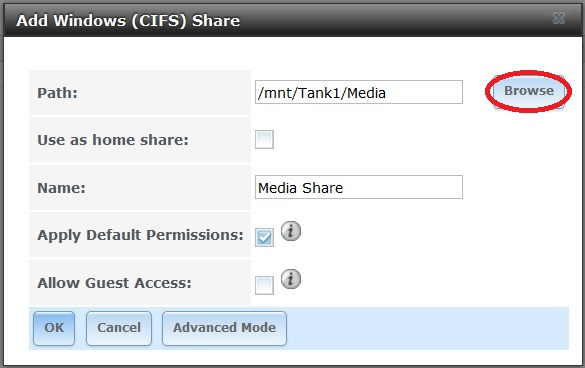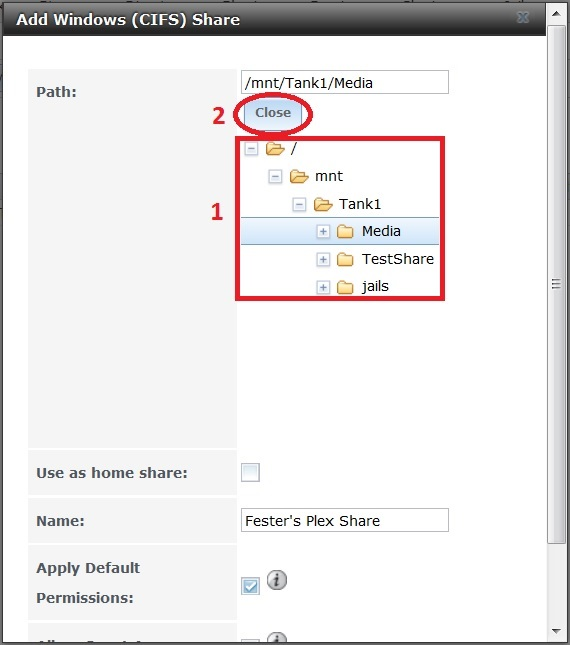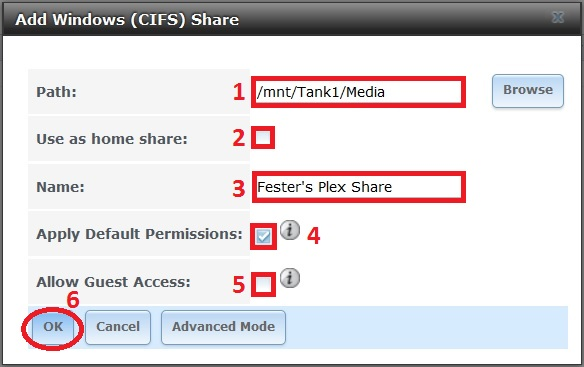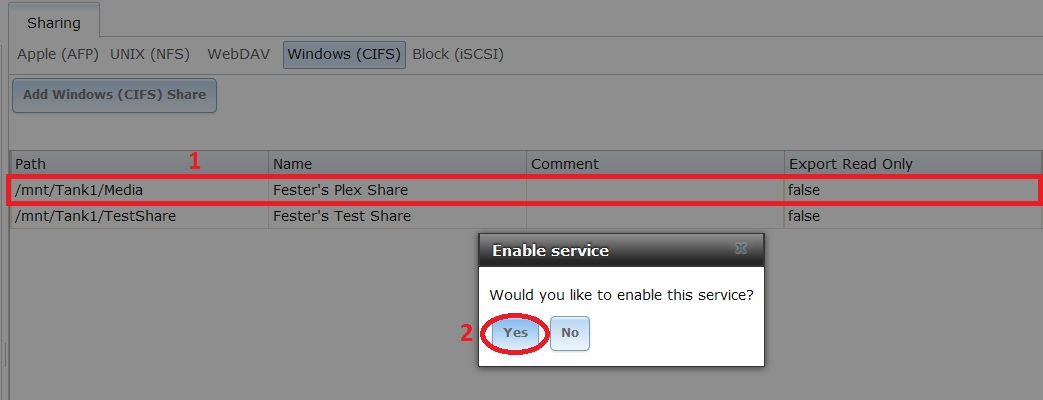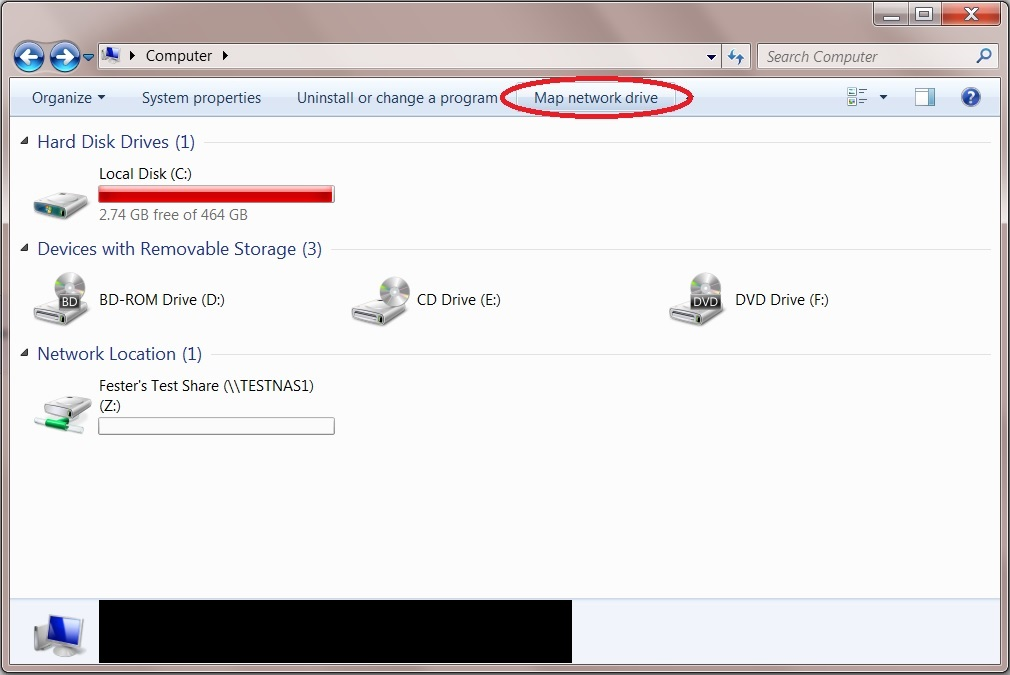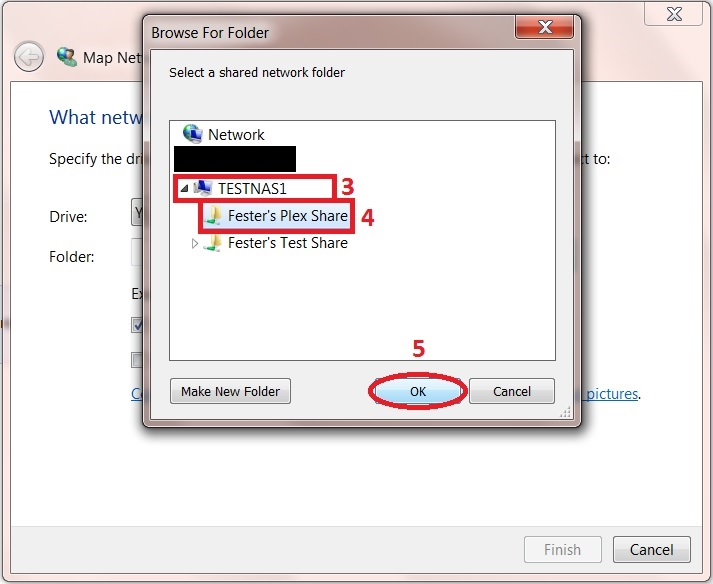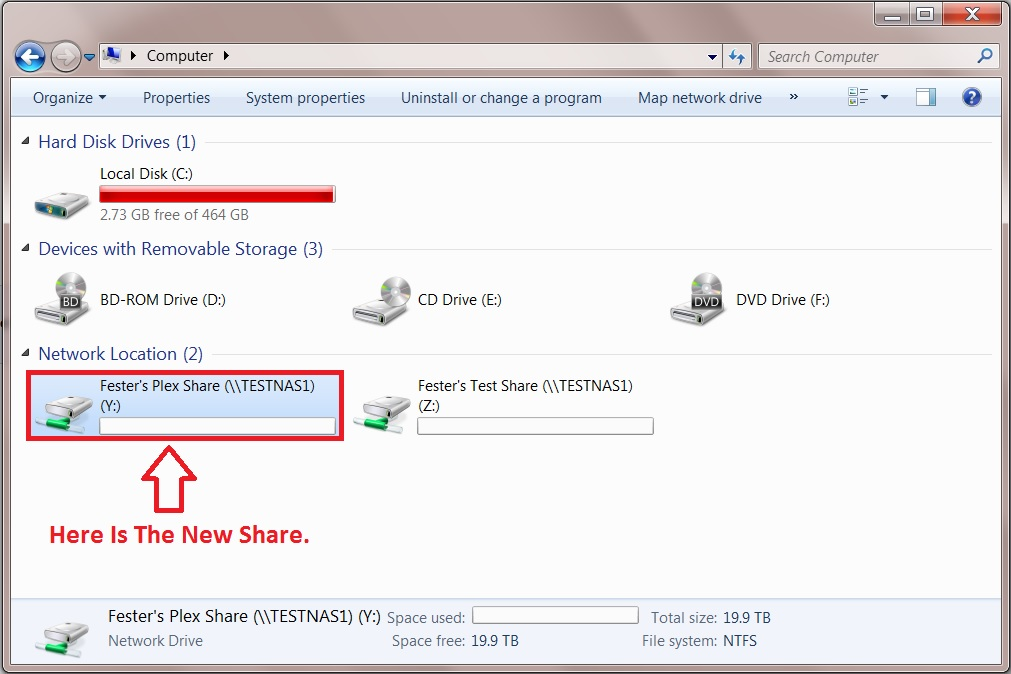Plex Media Server
This is a guide for installing the Plex Media Server plugin.
Create the Media Dataset
Go to the “Services” page.
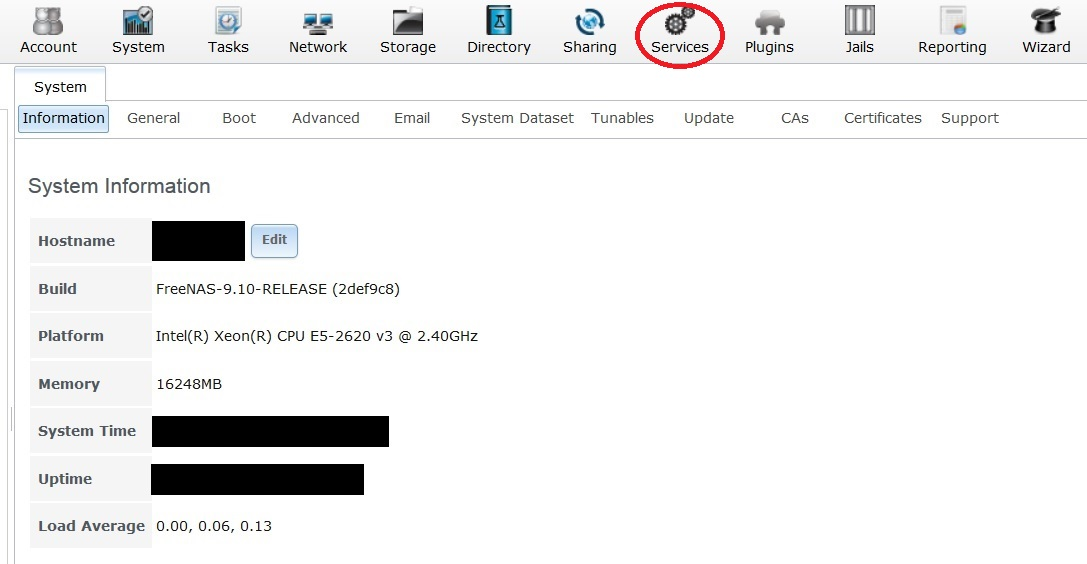
Now switch off the “CIFS” service.

We now need to create a dataset for storing all the media (i.e. films, music, etc) you have on your server.
- Go to the “Storage” page (1).
- Select the volume (it will turn blue when you choose it) (2) (in Fester’s case this was Tank1).
- Now click on the “Create Dataset” button (3).
- In the “Dataset Name:” text box (1) type a name for the new media dataset (Fester very imaginatively used Media).
- Leave the “Compression Level:” drop down selection box (2) at its default value (lz4).
- In “Share type:” I selected Windows simply because most of the clients on Fester’s network are Windows machines.
- Now click on the “Add Dataset” button (4).
If all goes well the new dataset will be listed in the “Storage” page.
Select the new dataset (it should turn blue when selected) (1).
Now click on the “Change Permissions” button (2).
- In the “Owner (user):” drop down selection box (1) select whatever user you created when we created the experimental share (in Fester’s case this was TestUser).
- In the “Owner (group):” drop down selection box (2) select whatever group you created when we created the experimental share (in Fester’s case this was TestGroup).
- Tick the “Set permission recursively:” tick box (3).
- Now click the “Change” button (4).
Add Media Share
Now go to the “Sharing” page.
Now click the “Windows (CIFS)” button (1) and then click the “Add Windows (CIFS) Share” button (2).
A new smaller window will pop up. In the “Path:” section click the “Browse” button.
The window should now expand a little and allow you to navigate to the newly created dataset (1). When you have it selected click the “Close” button (2).
- The “Path:” text box (1) should now display the chosen dataset.
- Do not tick the “Use as home share:” tick box (2) at the moment.
- Give the share a name in the “Name:” text box (3).
- Put a tick in the “Apply Default Permissions:” tick box (4) if a tick is not present.
- Do not tick the “Allow Guest Access:” tick box (5).
- Now click the “OK” button (6).
If all goes well you will see the newly created CIFS share entry (1). You will now be asked if you wish to enable the CIFS share service. Click the “Yes” button (2).
The CIFS share service should now turn on.
Give the server some time to get the share up and running, then it is time to map the new network folder to a drive letter.
Map Network Drive
On the Windows client click on the “Start” button and go into “Computer” (this was on a Windows 7 machine). This should bring up a window that shows all the hard drives and any other devices connected to the Windows computer. Click on the “Map Network Drive” button.
- From the “Drive:” drop down selection box (1) chose the drive letter you wish to assign to the shared folder (Fester accepted the default Y letter).
- Now click the “Browse…” button (2). This will cause a window to pop up.
- Navigate to the location of the shared folder by clicking on the server (in this case TestNAS1) (3) and then clicking on the shared folder itself (in this case Fester’s Plex Share) (4).
- Now click the “OK” button (5).
- The shared folder’s path name should appear in the “Folder:” text box (6).
- Tick the “Reconnect at logon! Tick box (7).
- Now click the “Finish” button (8).
If all has gone well you should find yourself in the shared folder. Here you can create other folders and save files. Test this to make sure there are no permissions problems. You should create a folder here for each type of media you want to use with the Plex Media Server (Movies, TV shows, Music, etc.).
Now copy a couple of media files (i.e. music, films, etc) into this folder. We will need these later to check the Plex media server.
The shared folder will now appear as another drive on your system and should look something like this.
Install the Plex Plugin
Now go to the “Plugins” page and wait for the page to become populated.
(If the Plugins page does not populate then check the DNS servers are configured properly in FreeNAS.)
Scroll down and select the plugin you want by clicking on it (in Fester’s case this was the PlexMediaServer) (1) and then click the “Install” button (2).
A small window with a warning message will pop up. Just click the “OK” button.
You should now see something like this.
When the Plex plugin has installed go to the “Jails” page.
Make a note of the IP address assigned to the Plex media server (it is under the “IPv4 Address” heading).
Now select the “plexmediaserver_1” jail (1) (it will turn blue when selected) and click on the “Add Storage” button (2).
A new smaller window will pop up.
In the “Source:” section click the “Browse” button.
The window should now expand a little and allow you to navigate to the newly created dataset (1).
When you have it selected click the “Close” button (2).
In the “Destination:” section click the “Browse” button.
The window should now expand a little and allow you to navigate to the folder within the Jail you wish to use (1) (Fester used the media folder).
When you have it selected click the “Close” button (2).
Now click on the “OK” button.
Remain within the “Jails” page and check that the storage for the Plex media server has been created by clicking on the “Storage” button (1). You should see an entry that relates to the newly created storage (2).
Now go back to the “Plugins” page.
Click on the “Installed” button (1).
Now switch on the Plex media server service by clicking on the “On/Off” button (2).
Give the Plex service a moment to get running.
Configure Plex Media Server
Now open your web browser and type in the following web address.
FreeNASAssignedWebAddressHere:32400/web
In Fester’s case this would look like this.
192.168.0.9:32400/web
If you don’t know the IP address that FreeNAS assigned to the Plex media server you can find it in the “Jails” page listed under the “IPv4 Address” heading.
If all goes well you should be presented with the Plex Media Server web GUI. You should see something like this.
Follow the on screen instructions to setup the Plex media server as you need it. As each person’s preferences are different I won’t cover that here. If you have any problems there is a wealth of information on the Plex website.
Whatever you do make sure you click the “Add Library” button so you can tell Plex where to find the folder within the Jail that links to the media share. If you don’t do this you will not be able to use your media files in Plex.
Fester likes music (let’s go Disco!) so I picked Music as the “Library Type” (1).
In the “Name” text box you can give the library a meaningful name (Fester stuck with Music).
Now click the “Add Folders” button (3).
Next click on the folder icon (1) and from the list that appears select the “media” folder (2).
Now click the “ADD” button (3).
Now click the “ADD LIBRARY” button.
If all goes well your media should appear (in Fester’s case two test files). You should see something like this.
 Add this page to your book
Add this page to your book  Remove this page from your book
Remove this page from your book  Manage book (
Manage book ( Help
Help 